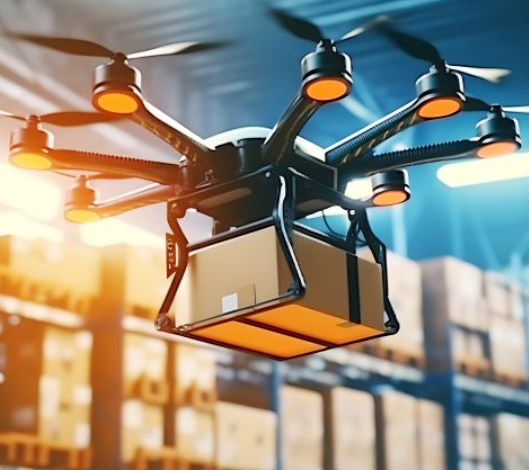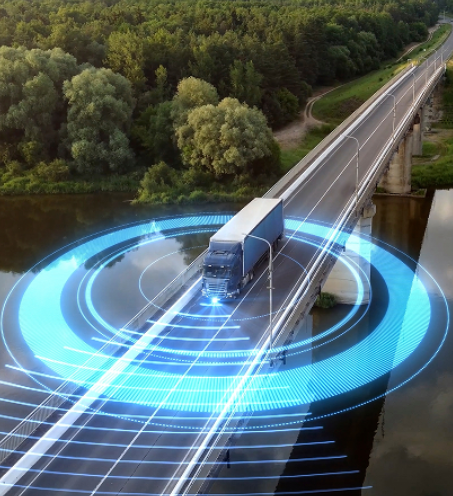Revolutionizing Cross-Border Shipping: The Role of AI in Logistics

For businesses involved in international trade, the challenges of cross-border shipping can often seem insurmountable. From complex paperwork to unpredictable delivery times, managing international shipments can be a daunting task. However, with the power of Artificial Intelligence (AI), these challenges are being redefined, leading to more efficient and streamlined logistics operations. In this post, we’ll explore how AI is revolutionizing cross-border shipping and making the process smoother for both businesses and their customers.
The Cross-Border Shipping Struggles
Shipping goods across borders involves navigating a series of obstacles that can delay deliveries, increase costs, and frustrate customers. Some of the key challenges businesses face include:
- Complicated Documentation and Customs: Shipping across borders requires extensive paperwork, from declarations to duty calculations. Missteps can lead to costly delays and compliance issues.
- Varying Regulations and Taxes: Different countries have distinct regulations, tariffs, and taxes for imports and exports. Keeping up with these rules can be overwhelming and lead to unexpected costs.
- Unreliable Shipping Timelines: International shipping often faces delays due to factors like weather, customs inspections, and transport disruptions, making it difficult to meet customer expectations for delivery times.
- Risk of Package Loss or Damage: The longer the journey, the higher the chances of goods being lost or damaged, especially when shipments travel across different countries.
- Lack of Real-Time Tracking: Without visibility into where a shipment is, businesses and customers alike are left uncertain about the status of their goods.
How AI is Transforming Cross-Border Shipping
AI is stepping in to tackle these common pain points, offering innovative solutions that improve efficiency, reduce delays, and enhance customer satisfaction. Here’s how AI is changing the cross-border shipping game:
Automating Customs Clearance
Customs clearance can be one of the most time-consuming parts of international shipping. AI is transforming this process by automating the documentation and classification of goods. With AI-powered tools, businesses can quickly analyze shipping data, classify products, and generate accurate customs declarations without manual intervention. By utilizing machine learning, these systems can learn from past shipments, reducing the risk of errors and delays, ensuring that goods pass through customs smoothly.
Real-Time Risk Assessment and Route Optimization
AI excels at analyzing vast amounts of real-time data to identify potential risks and optimize shipping routes. By collecting information from weather forecasts, traffic data, and historical shipping patterns, AI can predict delays before they happen. With this data, businesses can make real-time adjustments to routes, avoiding disruptions and ensuring faster deliveries. Whether it’s rerouting to avoid a traffic jam or adjusting to severe weather, AI allows companies to stay one step ahead.
Predictive Analytics for Accurate Delivery Times
Providing accurate delivery time estimates is critical in today’s fast-paced e-commerce environment. AI-powered predictive analytics use historical data and real-time insights to forecast when shipments will arrive, factoring in variables such as weather, traffic, and customs delays. By offering precise delivery windows, businesses can set realistic customer expectations, reducing the frustration of late shipments.
AI-Powered Chatbots for 24/7 Customer Support
Customer service is another area where AI is making a significant impact. AI chatbots, powered by Natural Language Processing (NLP), provide businesses with the ability to handle customer inquiries round the clock. These chatbots can answer questions about tracking, delivery status, and general shipping queries. By learning from each interaction, chatbots continuously improve, becoming more adept at providing helpful, personalized responses. This improves customer experience and ensures that support is always available, even outside of regular business hours.
Key Benefits of AI in Cross-Border Shipping
- Streamlined Customs Processes: AI simplifies documentation, classification, and declaration generation, reducing the risk of errors and speeding up the customs clearance process.
- Efficient Route Management: AI-powered tools help businesses adjust routes in real time based on current data, avoiding delays and reducing shipping costs.
- Accurate Delivery Time Estimates: Predictive analytics allow businesses to offer precise delivery times, improving transparency and managing customer expectations effectively.
- Enhanced Customer Support: AI chatbots ensure customers can get real-time answers, reducing waiting times and improving overall satisfaction.
- Cost Savings and Efficiency: Automating manual tasks and optimizing routes reduces operational costs, leading to faster and more cost-effective shipping.
Conclusion
AI is proving to be a game-changer in cross-border shipping, making international logistics more efficient and reliable. From automating customs clearance to providing real-time tracking and optimizing delivery routes, AI is transforming how businesses approach global shipping. As AI continues to evolve, it promises even greater efficiency, improved customer service, and cost savings, ensuring a smoother experience for businesses and their customers in the world of cross-border logistics.




